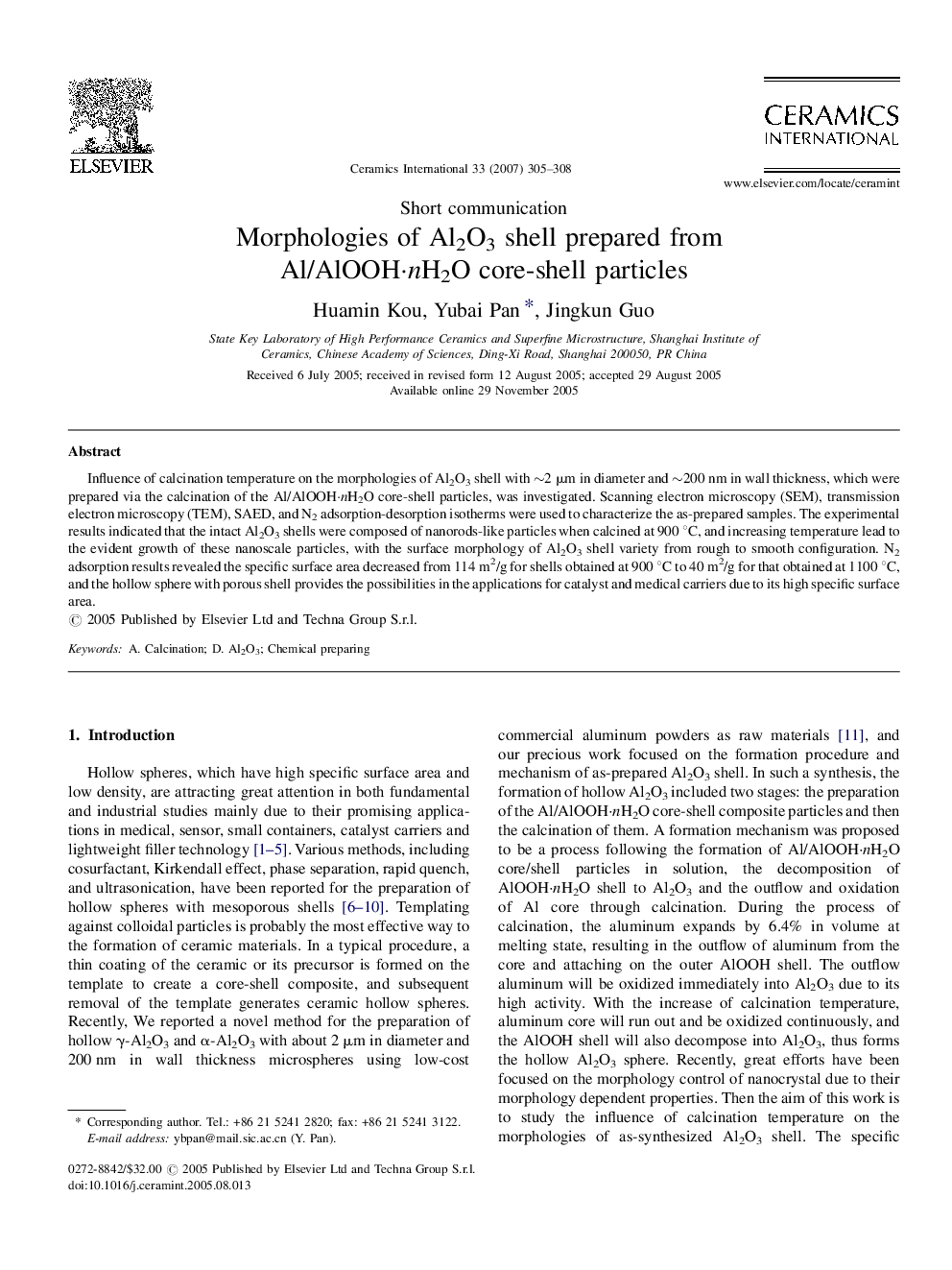| Article ID | Journal | Published Year | Pages | File Type |
|---|---|---|---|---|
| 1465119 | Ceramics International | 2007 | 4 Pages |
Abstract
Influence of calcination temperature on the morphologies of Al2O3 shell with â¼2 μm in diameter and â¼200 nm in wall thickness, which were prepared via the calcination of the Al/AlOOH·nH2O core-shell particles, was investigated. Scanning electron microscopy (SEM), transmission electron microscopy (TEM), SAED, and N2 adsorption-desorption isotherms were used to characterize the as-prepared samples. The experimental results indicated that the intact Al2O3 shells were composed of nanorods-like particles when calcined at 900 °C, and increasing temperature lead to the evident growth of these nanoscale particles, with the surface morphology of Al2O3 shell variety from rough to smooth configuration. N2 adsorption results revealed the specific surface area decreased from 114 m2/g for shells obtained at 900 °C to 40 m2/g for that obtained at 1100 °C, and the hollow sphere with porous shell provides the possibilities in the applications for catalyst and medical carriers due to its high specific surface area.
Keywords
Related Topics
Physical Sciences and Engineering
Materials Science
Ceramics and Composites
Authors
Huamin Kou, Yubai Pan, Jingkun Guo,
